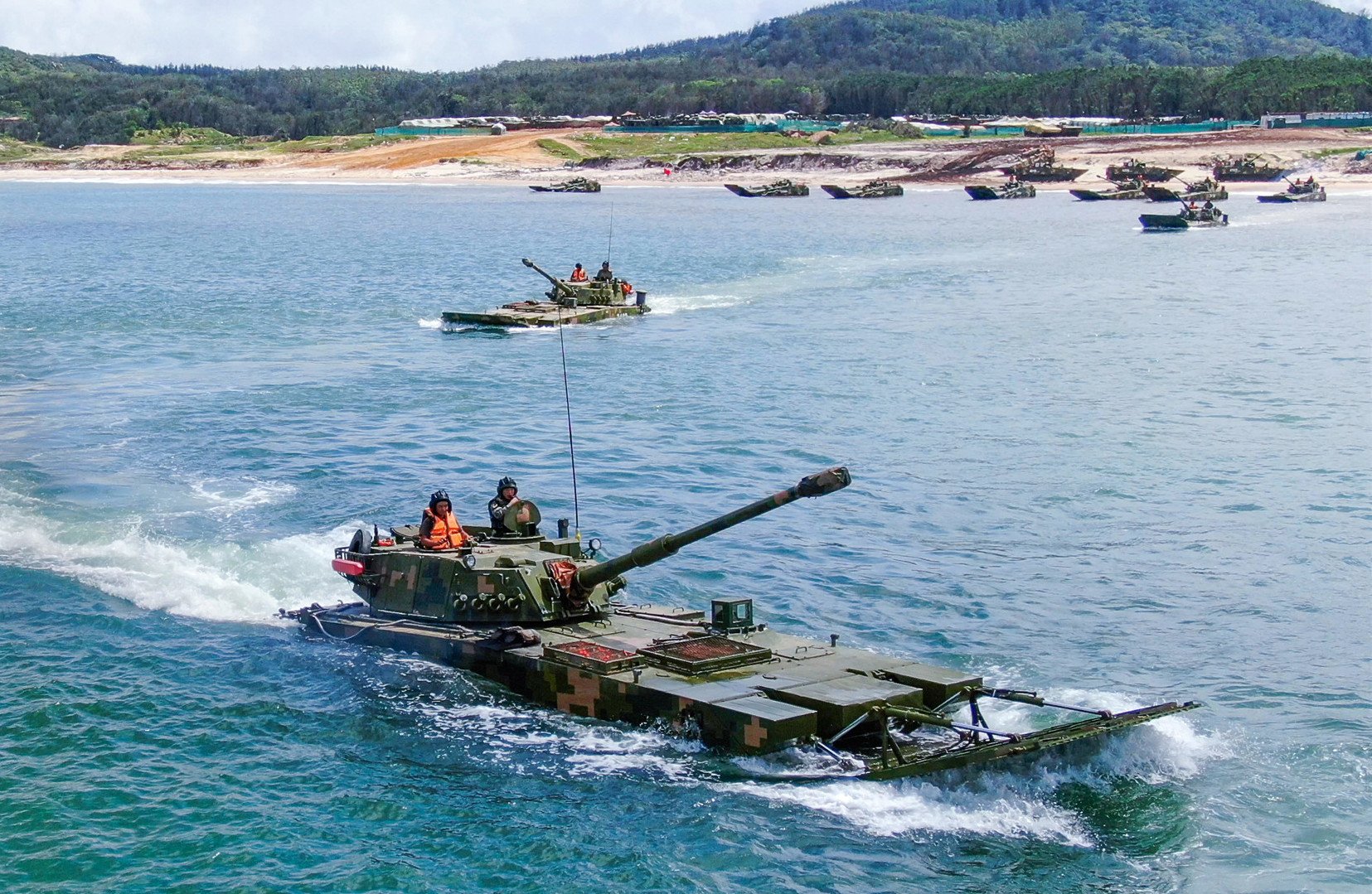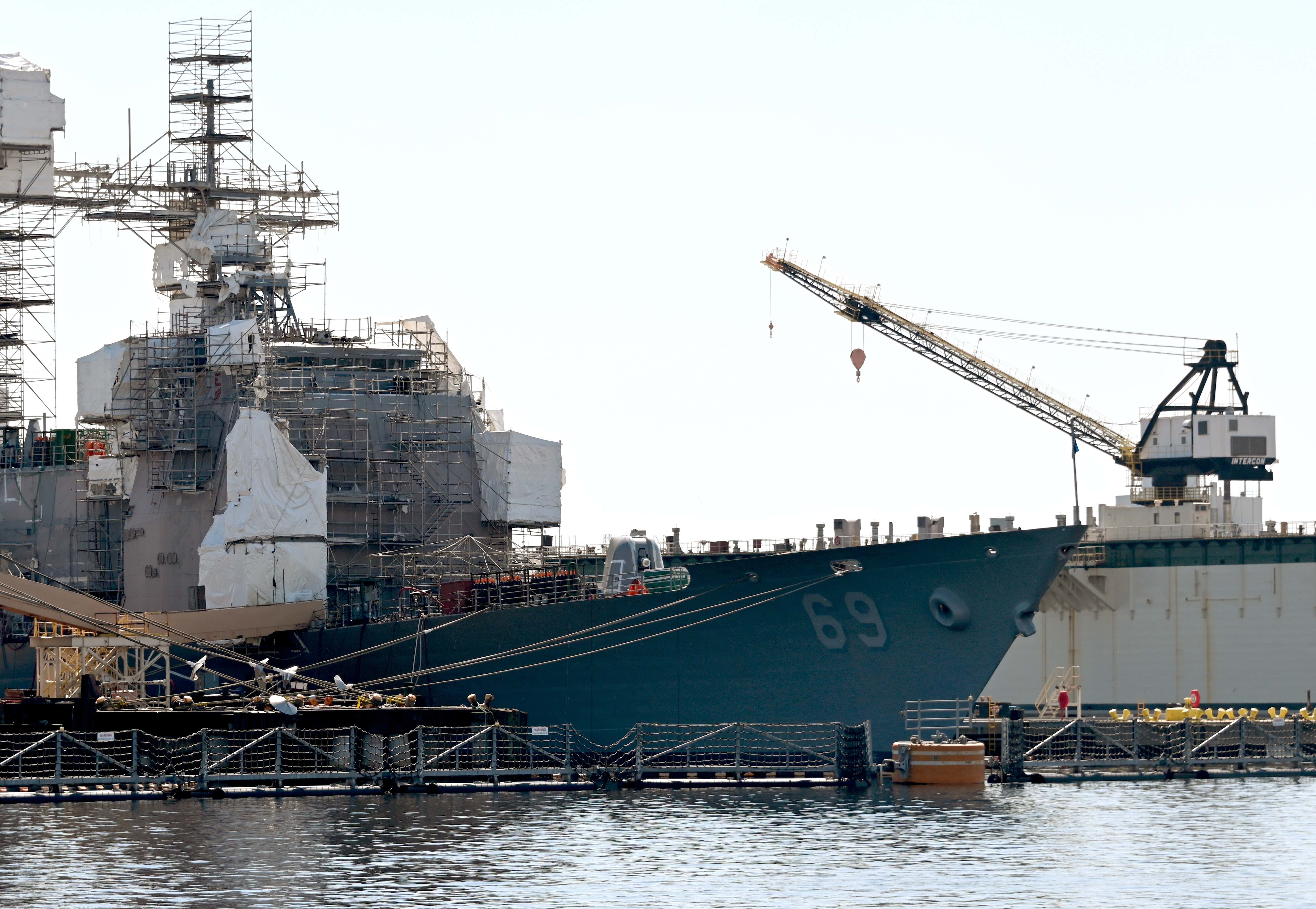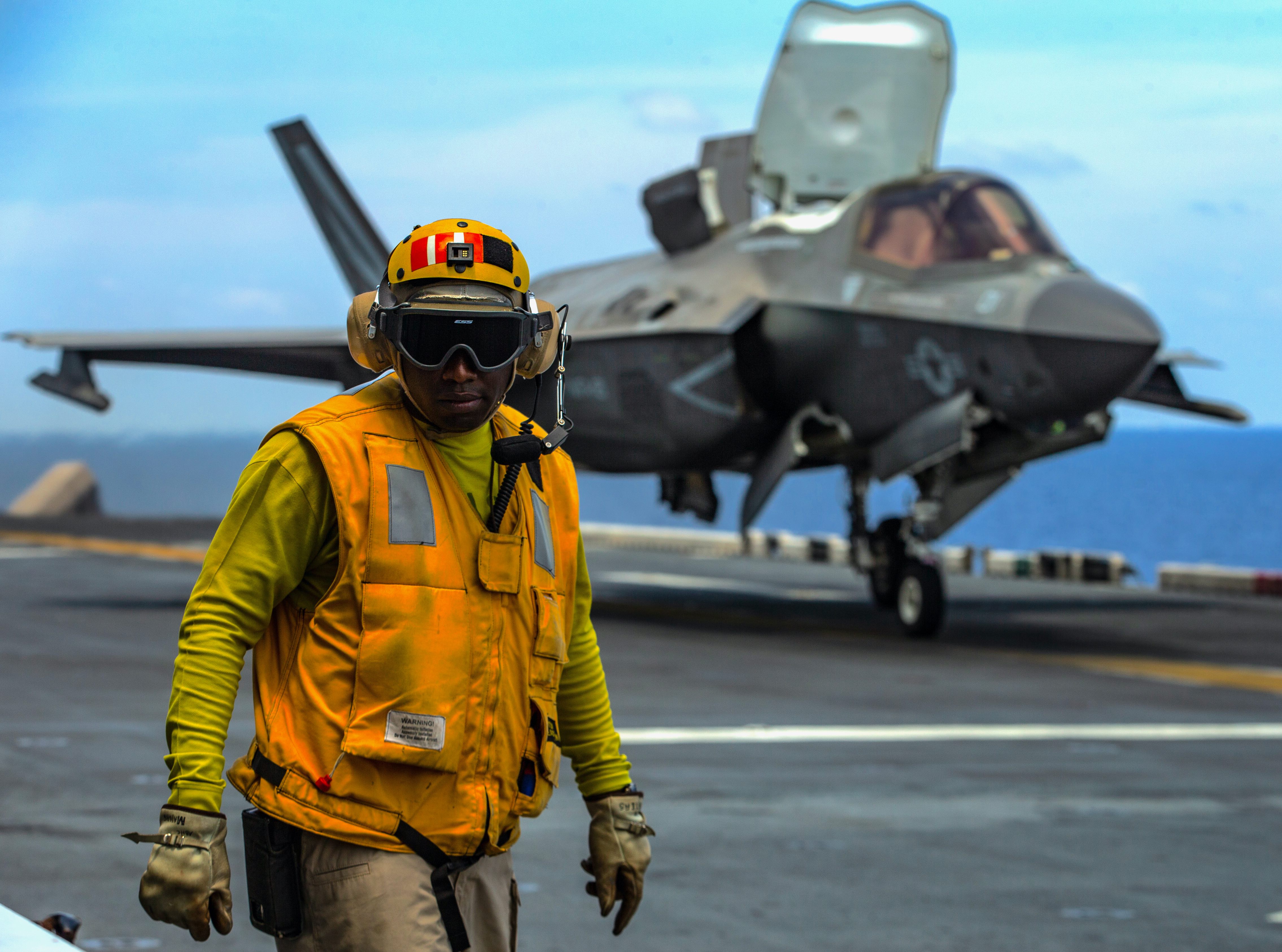
WASHINGTON, D.C. — China is looking to speed up its timeline for taking control of Taiwan to 2027, raising concerns with one member of Congress that the Pentagon is modernizing too slowly.
U.S. Navy officials have pointed to 2027 as the year when China wants to have the capability to take over Taiwan. Rep. Mike Gallagher (R-Wis.), a former Marine who sits on the House Armed Services Committee, pointed to that timeline on Tuesday as a reason why the Pentagon needs to modernize faster and prepare for a conflict with China in the Indo-Pacific region.
“China’s just throwing so much money into military modernization and has already sped up its timeline to 2027 for when it wants the [People’s Liberation Army] to have the capability to seize Taiwan, that we need to act with a sense of urgency to tackle that threat because that is something unlike anything we’ve seen in modern history, at least,” Gallagher said.
The congressman criticized the Navy’s approach to the budget process, including its push to decommission ships, and the service’s most recent 30-year shipbuilding plan that proposed three alternatives for how to build the future fleet.
“And indeed what the Navy’s proposing is to bottom out the force at 280 ships by 2027, at the worst possible moment. The Navy will be weakest when the PLA is strongest vis-à-vis Taiwan. So it makes absolutely no sense,” he said.
On Sunday, People’s Republic of China President Xi Jinping reaffirmed Beijing’s stance to unify Taiwan to the mainland. On Monday, U.S. Secretary of State Antony Blinken said China is moving faster to seize the island.
“There has been a change in the approach from Beijing toward Taiwan in recent years. And instead of sticking with the status quo that was established in a positive way, a fundamental decision that the status quo was no longer acceptable and that Beijing was determined to pursue reunification on a much faster timeline,” Blinken said at a Hoover Institution event. “And if peaceful means didn’t work, then it would employ coercive means – and possibly, if coercive means don’t work, maybe forceful means – to achieve its objectives. And that is what is profoundly disrupting the status quo and creating tremendous tensions.”
Blinken said the volume of shipping traffic in the Taiwan Strait and the Strait of Malacca has led to an increased focus on China for both the U.S. and nations across the globe. The two straits lead to the South China Sea, which sees one-third of worldwide shipping passing through its waters, according to the Center for Strategic and International Studies.
“If that were to be disrupted as a result of a crisis, countries around world would suffer,” Blinken said of traffic in the straits.
“On semiconductors, if Taiwanese production were disrupted as a result of a crisis, you would have an economic crisis around the world,” he added. “So there’s a profound stake not just for us but for countries around the world in preserving peace and stability when it comes to Taiwan and the straits, and to making sure that the differences that exist are resolved peacefully. So that’s why we’ve been so engaged on this.”

On Tuesday, Gallagher criticized the divest to invest approach the military has taken in recent years and said new technologies like directed energy, hypersonic weapons, and the Joint All-Domain Command and Control initiative won’t come online before China could try to take control of Taiwan.
“None of those are going to be ready for prime time within what’s called the Davidson window. So integrated deterrence I think is a recipe for disaster,” Gallagher said of the new technologies.
The congressman argued that the withdrawal from Afghanistan hurt the United States’ ability to deter Russia from invading Ukraine and warned of what this could mean for China and Taiwan.
“If we don’t sort of learn the right lessons there, then we’re going to see another deterrence failure in Taiwan,” he said.
Gallagher spoke Tuesday morning at a press conference at the Heritage Foundation as the think tank unveiled its 2023 Index of Military Strength. The index rated the United States military as “weak” for the first time in the report’s history.
“If there’s a big takeaway from this year’s index – this is the ninth edition – in all previous editions we’ve said that based on capacity, primarily in readiness, the military could probably handle a major contingency while it’s doing all these other things. But we’re kind of marginal, right, you should be able to do more,” said Dakota Wood, the Heritage Foundation senior fellow who edited the report.
“And so this is the first year where we’ve dropped the overall rating from marginal to weak. So when you look at flight hour programs, the number of ships and airplanes and pilots and battalions and brigades, and their ability to train, we think it’s becoming questionable about whether or not the military would actually win in a regional contingency.”
Wood voiced concern over the United States’ munitions stockpiles following numerous presidential drawdown authorities that have sent arms to Ukraine amid Russia’s invasion.
“As poorly as the Russians are performing, look at the extraordinary amount of munitions that we have had to pour into Ukraine so that they could match their bravery with the equipment and resources to battle against the Russians,” Wood said.

Wood, a retired Marine, estimated that the U.S. has sent 800,000 artillery rounds to Ukraine.
“I’ve learned that the Marine Corps usually maintains an inventory of 70,000 rounds on an annual basis for training and for contingencies and all those sorts of things. Because of our support to Ukraine, that’s now down to 14,000,” he said. “So I mean, how do we restock those inventories even though they’re being put to very good use. So now think about U.S. forces, the volume of fire we usually bring to the game, and how long can we sustain that over time.”
Gallagher echoed Wood’s concerns about the U.S. munitions stockpiles and also cautioned against the assumption that Russia’s difficulties in Ukraine could alter China’s calculus when it comes to Taiwan.
“I think it would be dangerous to say, ‘okay because Russia has encountered unexpected friction in Ukraine that somehow, let’s say China is going to be deterred in a Taiwan scenario.’ Because one, Xi Jinping is going to school on the Russian failures in Ukraine. Two, some of the weapons systems that are relevant for Ukraine are also relevant to Taiwan and we’re going winchester on those weapons systems,” Gallagher said.
“We just burned through two years worth of Javelins in the first two months. It’s gong to take us two years to double our stockpile going forward,” he added. “And three, the same thing that make[s] Taiwan a difficult problem for the PLA … naturally you can defend it, also make it difficult for us to resupply Taiwan.”





